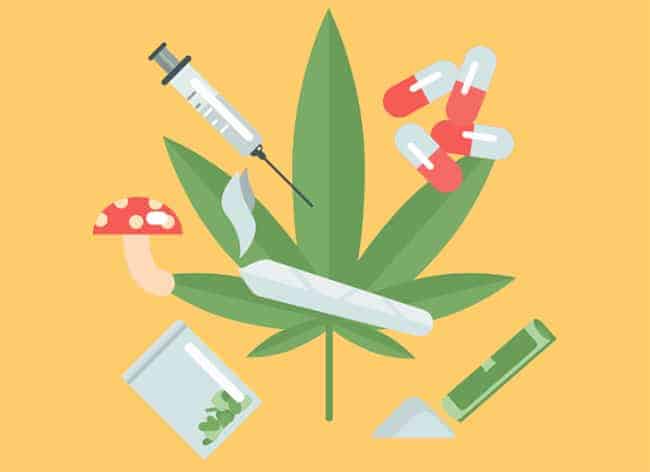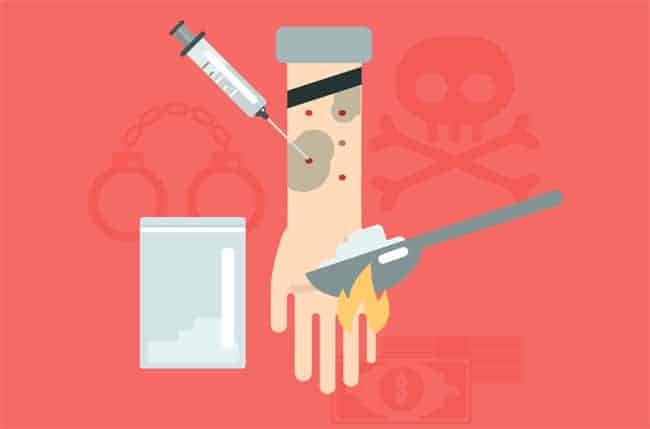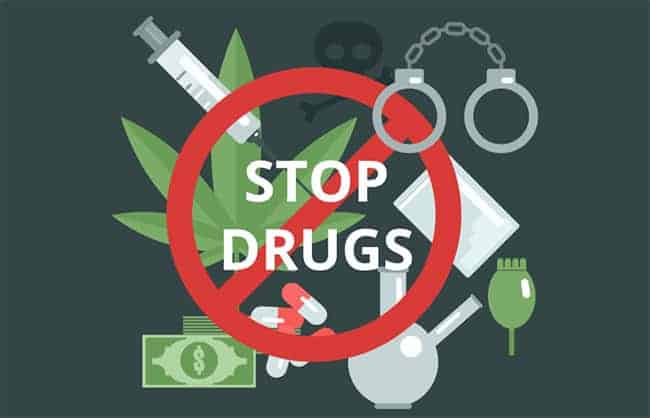BY PHILLIP M. PERRY
Workplace drug abuse can threaten your bottom line in many ways. Higher absenteeism. Lower productivity. Costly accidents that spark lawsuits.
Employers are facing a greater risk than ever from a growing culture of impairment that shows no signs of tapering off any time soon.
“We are seeing a real uptick in the number of employees testing positive for drug abuse,” says Nancy N. Delogu, shareholder in the Washington, D.C., office of Littler Mendelson, the nation’s largest law firm defending employers in labor disputes. The portion of U.S. employees testing positive for marijuana, amphetamines and heroin has increased over the past three years to a 10-year high, according to the 2016 annual report from Quest Diagnostics, a Madison, New Jersey-based company that tracks such matters. Just less than 4% of employees now fail their urine drug tests.
Marijuana, opioids drive problem
What’s prompting the upsurge? Reason No. 1—marijuana. “More states are legalizing marijuana for recreational and medical use,” says Calvina Fay, executive director of St. Petersburg, Florida-based Drug Free America Foundation and founder of the National Drug-Free Workplace Alliance. “That has helped to normalize the drug and make it socially acceptable.”
As marijuana becomes more popular, employers face greater liability when dealing inappropriately with individuals under the influence.
Reason No. 2—pain pill abuse. “The opioid epidemic has become a significant issue for small- and medium-sized employers over the past year,” says Donna R. Smith, regulatory compliance officer in the Tampa Bay, Florida, office of Workforce QA, a nationwide third-party administrator of drug-free workplace programs. Employers face the confusing task of responding appropriately to the abuse of these prescription drugs that employees can obtain legitimately or illicitly
Drug abuse erodes profits
For employers, the risk is clear. “Workplace drug abuse is costly in terms of lower productivity, higher tardiness and absenteeism, greater use of medical benefits, and increased incidents of pilferage and shrinkage,” says Dee Mason, president of Working Partners, a consulting firm based in Canal Winchester, Ohio.
Then there is the higher incidence of accidents that can strain health care resources and lead to spikes in workers’ compensation premiums. “The drug abuser is more than 3 ½ times as likely to have an accident on the job, and five times more likely to have an off-the-job accident that impacts workplace performance,” Mason says. “Some 47% of workplace accidents that result in serious injury and 40% of those that end in death have alcohol and other drugs involved.” The role of drugs in workplace accidents is highlighted in the Quest survey, in which 6.9% of tested employees were positive for drug use.
Accidents, in turn, can spark costly lawsuits. The view in the courts today is that when a customer is hurt, the employer is at fault. “It’s critically important for any business to protect employees and the public,” says Joe Reilly, president of his own drug testing consulting firm in Melbourne, Florida. “At smaller companies especially, one accident can be devastating.”
Smaller businesses face special problems
“Smaller businesses with higher employee turnover are particularly at risk for workplace drug abuse,” Mason says. Many drug users realize they will be turned down for the permanent positions offered at larger companies where pre-employment drug tests are a matter of course. These people instead will apply for jobs at smaller companies, which may tend to skimp on drug testing. The risk is even higher at those businesses relying on part-time, temporary and seasonal workers.
“Contrary to popular belief, some 70% of drug abusers are employed,” Mason says. “If they cannot get work with large, established organizations, they will apply at smaller ones.”
Drug testing can help
Drug testing can help you protect your own business from the costly effects of impaired workers. “Drug testing can be done on a pre-employment basis, as well as following workplace accidents,” Fay says. “It also can be done randomly, which can serve as an especially effective deterrent to drug abuse.” Indeed, employees often cite random testing programs as the reason they do not get involved with illicit drugs.
You also can use “reasonable cause” as a test trigger. “Many employers have adopted what is called a ‘reasonable suspicion’ policy calling for intervention when the employer suspects the possibility of drug abuse,” Delogu says. “Different things can constitute reasonable suspicion. Maybe it’s behavior that suggests possible impairment. Or maybe it’s a tip received from a couple of co-workers who are friends of the employee. Or perhaps you learn that an employee was arrested and charged with a drug-related crime.”
Whatever the reason you test, you must conform to federal, state and local laws. “Some states do have limitations on drug testing,” Delogu says. “So in those jurisdictions make sure you know and comply with law.”
Respond carefully to positive tests
And what do you do if the drug test is positive? “There are two options,” Delogu says. “One is adverse employment action like termination. Some employers do that from the first, especially if they have made it clear from the beginning that employees who need help can come forward for assistance without fear of discipline.”
The second option is to offer someone an opportunity to get assistance. “A second chance usually involves an evaluation by a substance abuse professional and the opportunity to complete an education and/or treatment program and then undergo follow-up testing,” Delogu says. “Rather than just tell the employee to enroll in a treatment program, have the person evaluated by a professional and agree to do what is prescribed.”
Many counselors urge employers to look seriously at a second chance for first offenders. “A large percentage of people who test positive for the first time are not dependent yet, but have recreationally imbibed,” Mason says. “If they are dealt with properly, including counseling, they will walk the line and do better. They often turn into excellent, loyal employees.”
How to cut costs
Of course, drug testing is not free, and you might be hesitant to engage in a program that adds to your expenses. Yet, there are ways to save money without sacrificing quality. “Utilize nonprofit resources such as the Drug Free America Foundation to link up with consortiums of other small employers so your buying power increases,” Smith suggests. The cost of a drug test typically runs around $30 when purchased through a consortium and around $40 when purchased on the open market.
Other ways to save money: Test only for those drugs currently present in your community. “You can find out what drugs to test for by watching your local media,” Mason says. “They are usually good at picking up these stories. You can also ask your local law enforcement agencies or the emergency rooms of area hospitals. They can tell you what drugs they are seeing and what drugs are on an upswing.” Finally, in many states employers with drugfree workplace programs qualify for reductions in workers’ compensation insurance premiums.
Bonus tip: “Opioids are widely available and abused despite efforts to limit their abuse,” Delogu says. “So, if you do have a drug-testing program, be sure you are testing for them.”
Prescription drugs pose problems
Bear in mind that testing will not uncover all drug use. “Drug tests are for the purpose of discovering illegal drug use, not legal use,” Delogu says. “You will not receive positive test reports for use of a drug that is prescribed by a physician. In such cases the medical officer will confirm the existence of the prescription and report the test as negative with no details included.”
This can pose a problem. What if an employee is exhibiting erratic behavior as a result of legal use of prescription drugs? In such a case, notes Delogu, you might still have actionable performance issues resulting from drug use. But you might also be required by law—or by your own personal preference—to accommodate the drug user with changes to job duties. Here, again, consult your attorney and conform to federal, state and local laws.
At the very least, your workplace policy can require employees to report any negative side effects of prescription drugs. “Many prescribed drugs have warnings about operating machinery or driving vehicles,” Reilly says. “Every employer should have a policy with words such as these: ‘If you are on prescribed medication, provide a statement from your physician as to whether or not you can perform your job.’ And while you cannot tell people not to take their prescribed medication, you can monitor and respond to resulting performance concerns. If it turns out an employee using prescribed drugs cannot do an assigned job, consider accommodating the disability by reassigning duties or granting medical leave for a set period of time.”
Testing alone is insufficient
A drug-testing program can be dangerous in isolation. “The worst thing you can do is wake up one morning and decide to start testing people,” Reilly says. “If you get a positive, you then have to ask yourself ‘What do I do now?’ ” On the other hand, if your testing program is part of a more encompassing workplace drug policy, you’ll already know what to do. “Maybe it’s termination, or maybe it’s giving the employee a second chance with counseling and treatment,” Reilly says.
Your drug policy should be part of a larger drugfree workplace program, which includes education on the effects of drugs, supervisor training in spotting and responding to impaired employees, and access to counseling resources such as an employee assistance program. While many EAPs gear their services toward large corporations, you may be able to join a local consortium of smaller employers that use an EAP at a reduced rate.
And the benefits can go beyond a reduction of drug abuse. “People might turn to alcohol or drugs to deal with depression after the death of a loved one or after a marital breakup, or other reasons,” Fay says. “Having a source to turn to for counseling is a much better alternative than drugs.”
Realize that when it comes to workplace drug policies, one size does not necessarily fit all. “Be mindful that a single policy about disclosure of medications and drug testing may not be suitable for all categories of workers,” Smith says. “Employees in safety critical jobs, who drive vehicles, who interface with clients or go into customer homes may be subject to one set of policies. People in accounting and sales may be subject to another, less restrictive set.”
Put the above formula in place, and your employees will think positively about your treatment of this growing issue. “The public may think of a drugfree workplace program, with its drug testing, as punitive in nature,” Fay says. “But it is actually positive, with its emphasis on education, wellness programs and support for employees dealing with stresses in life.”
A well-designed drugfree workplace program can reduce the costly effects of employee impairment. “You can never completely stop drug abuse in the workplace,” Fay says. “But you can tamp it down and minimize its impact.”
So your state has legalized marijuana . . .
Has your state legalized marijuana for recreational or medical use? Or is it expected to do so? You may be wondering how the conflict between federal and state law will affect your ability to test your employees for marijuana and prohibit its use. Here are some insights into an evolving situation.
“It is still legal to test for marijuana in every jurisdiction,” says Nancy N. Delogu, shareholder in the Washington, D.C., office of Littler Mendelson, the nation’s largest law firm defending employers in labor disputes. “And it is still legal to decline to hire or employ workers who use marijuana for recreational purposes.”
One caveat—if you don’t want to know if your employees are using marijuana, don’t test for it, she says. “Knowing that someone uses marijuana and failing to take steps to ensure that he or she doesn’t work while impaired could lead to liability if the employee does something that harms a third person.”
As for medical use of marijuana, know your state law. “In a few states that ask employers to accommodate medical marijuana use, terminating the worker following a positive test without evidence of impairment could be risky,” Delogu says. “In New York, for example, if marijuana is being used for medicinal reasons, the employer might have to determine whether it could accommodate that worker in some way so as to permit effective work.” (Although, to date, no court has held that an employer must accommodate such use, while federal law differs).
Finally, she says, it is “absolutely and everywhere” allowable to terminate any employee who brings the marijuana substance into the workplace.
The insights above are provisional, so consult with your attorney about your own state and local legislation. “It’s important to know the current law in your jurisdiction and to watch for updates,” Delogu says. “This area of the law is very dynamic and changing all the time.”








